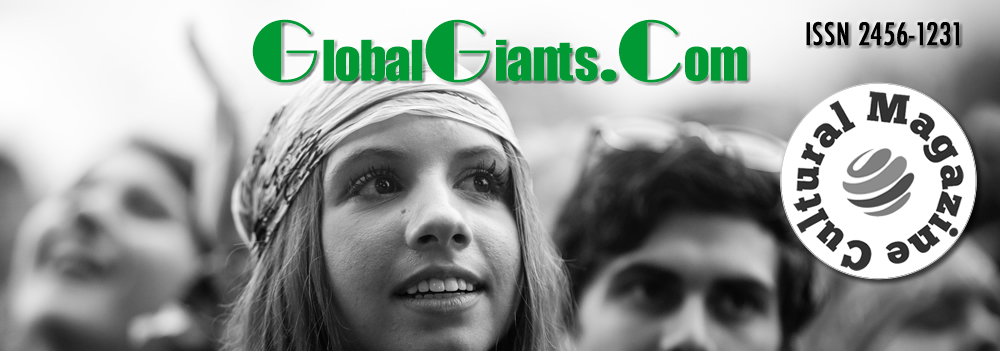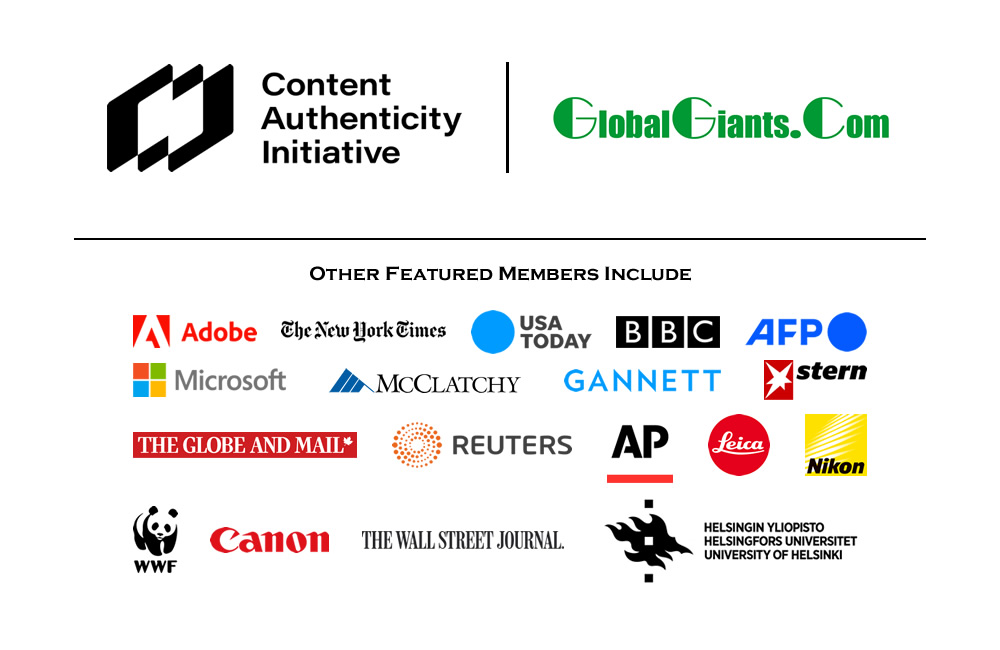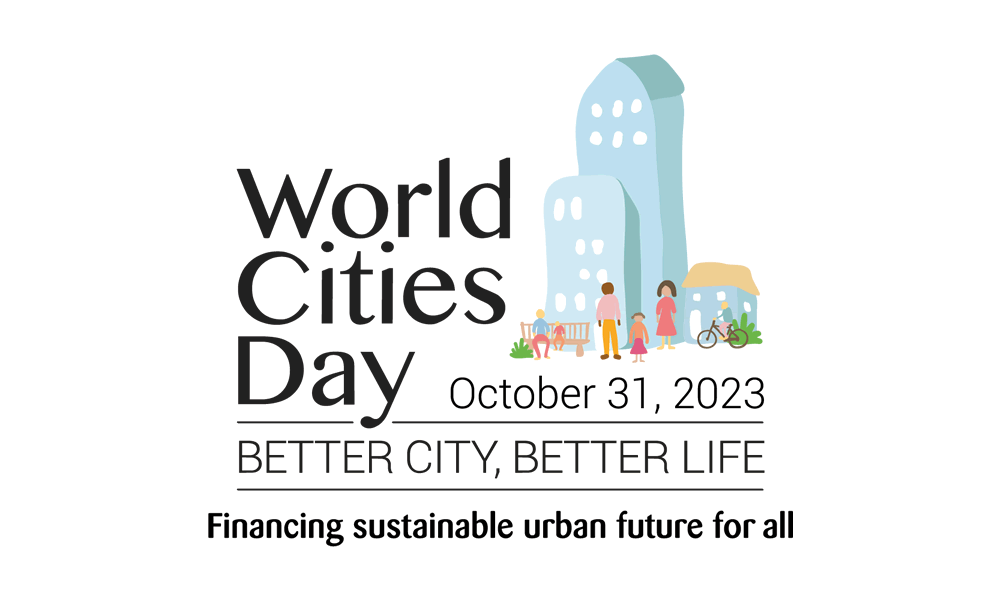« September 2008 | Main | November 2008 »
October 31, 2008
GM and Chrysler Transaction is the Best Alternative to Preserve Jobs and Cash: Grant Thornton

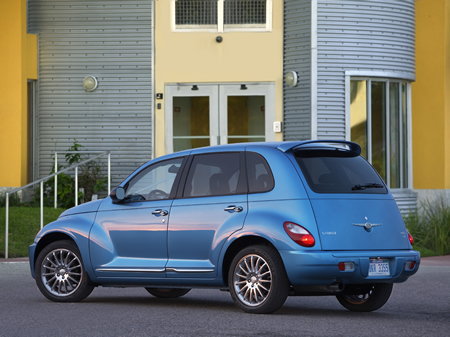
Photo: 2009 Chrysler PT Cruiser
Grant Thornton LLP's Corporate Advisory and Restructuring Services Group has announced the release of The State of Chrysler report, which, according to it, "Thoroughly examines the company, including its operations, product development, future outlook, strategic alternatives and the hidden value of a potential transaction, including the widely-rumored marriage of General Motors Corp. and Chrysler LLC."
"Chrysler as we know it will cease to exist very soon," says Kimberly Rodriguez, principal of Grant Thornton's automotive practice. "At this point, there are very few options available to either company. We believe a transaction between GM and Chrysler is likely because it would be the most expedient way to protect cash and jobs at both companies. If one or the other company were to fail, we would face a much bigger calamity -- the collapse of the North American supply base and the potential endangerment of all three Detroit automakers and businesses that depend on them."
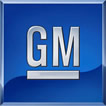
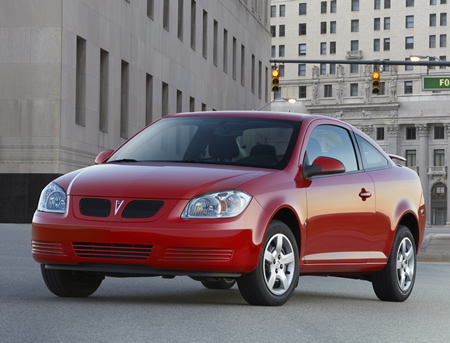
Photo: GM 2009 Pontiac G5 XFE (United States)
The report finds that under a GM/Chrysler transaction, Cerberus Capital Management would likely receive half of GMAC, GM's financing arm, and keep a percentage of the merged manufacturing entity. There is a strong possibility that the federal government and current company stakeholders will participate in a transaction, with the goal of completing a deal before the presidential election.
More specifically, Grant Thornton's Automotive Advisory experts note the following possible outcomes under a GM/Chrysler transaction:
• Chrysler has 26 model offerings, of which Grant Thornton considers only seven to be core and likely to be retained (56 percent of sales). These include the Dodge Ram pickup truck, core Jeep-brand vehicles and the company's minivans.
• Half of Chrysler's 14 existing manufacturing facilities likely would close. Three already have been announced for closure. A plant reduction of this magnitude would equate to about 12,000 production jobs lost plus another 12,000 administrative positions. Of this amount, a reduction in force of 5,000 has already been announced.
• Hundreds of supplier companies would be impacted, which could result in the loss of an additional 50,000 jobs.
• Dealer consolidation efforts will intensify. Chrysler and GM combined have 22,000 franchises -- half of the total in the United States. However, the combined market share of the merged companies would only be about one-third of today's significantly smaller market for new vehicles.
"Despite the significant number of families that will be impacted, the benefits of combining the two companies are both structural and strategic," Rodriguez said. "From an economic and political standpoint, the new company will likely be viewed as 'too big to fail.'"
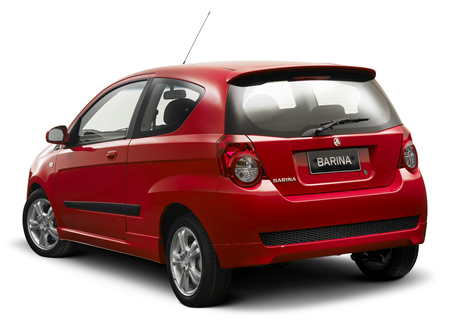
Photo: GM 2008 Holden Barina (Australia)
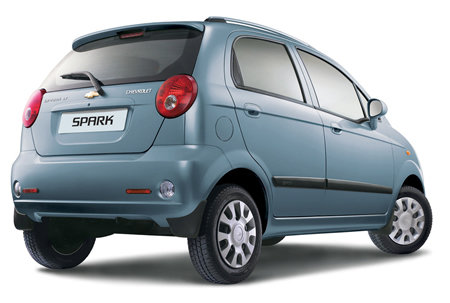
Photo: GM Chevrolet Spark (India)
Other benefits include:
• GM is strong in international markets and is increasingly leveraging global vehicle architectures for scale and efficiency. It is a leader in plug-in hybrid technology with the Chevrolet Volt. To this product mix, Chrysler brings seven key models that have been recently redesigned or will be by 2010.
• The new company will be a much more powerful force in the full-size pickup truck segment, displacing Ford as the truck leader.
• The combined company will have more liquid assets, thanks to the cash on Chrysler's balance sheet.
• Significant cost-reduction opportunities will be possible, especially in sales, marketing and administrative functions. Overlapping assets can be sold.
Rodriquez concludes, "On the whole, the combination of GM and Chrysler would certainly create yet another wild ride on the auto industry rollercoaster, where cash and platform position determine the winners and losers."
Source: Grant Thornton LLP
|GlobalGiants.com|







Edited & Posted by the Editor | 8:01 AM | View the original post
October 27, 2008
Volvo Ocean Race 2008-09

Photo: Telefonica Blue officially suspended racing having reached landfall near Gibraltar to undertake repairs to the steering gear they damaged soon after the race start in Alicante. (© Dave Kneale/Volvo Ocean Race)
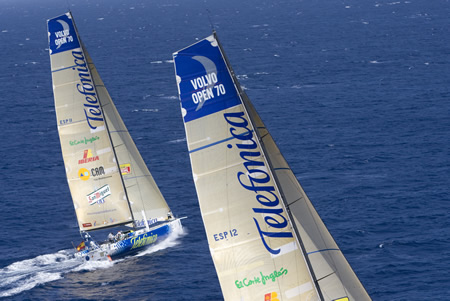
Photo: Telefonica Blue and Black training off Alicante. (© Maria Muina/Equipo Telefonica)
The Volvo Ocean Race 2008-09 is the 10th running of this ocean marathon. Starting from Alicante in Spain, on 4 October 2008, it is, for the first time, taking in Cochin, India, Singapore and Qingdao, China before finishing in St Petersburg, Russia for the first time in the history of the race. Spanning some 37,000 nautical miles, visiting 11 ports over nine months, the Volvo Ocean Race is the world's premier ocean yacht race for professional racing crews.
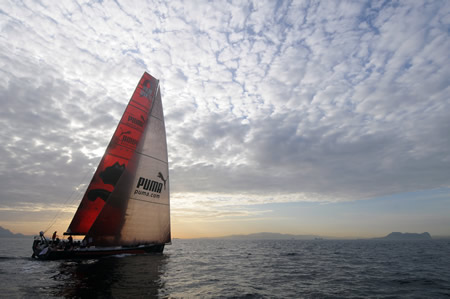
Photo: PUMA Ocean Racing heads into the Gibraltar strait during leg 1 of the Volvo Ocean Race. (© Dave Kneale/Volvo Ocean Race)
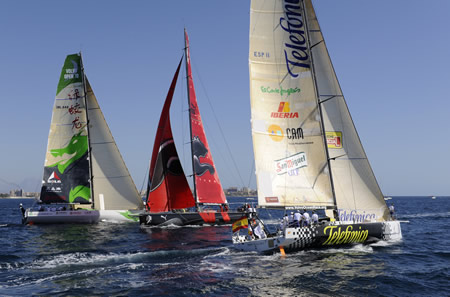
(Photo © Rick Tomlinson/Volvo Ocean Race)
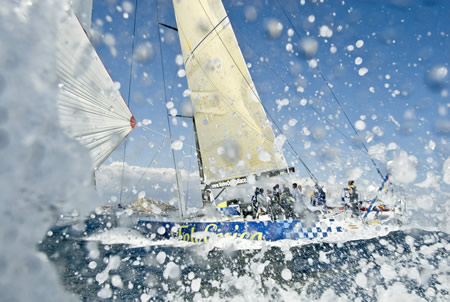
Photo: Telefonica Blue sail testing off Alicante, prior to the in-port race. (© Rick Tomlinson/Volvo Ocean Race)
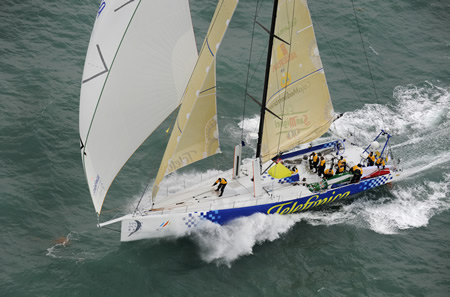
Photo: Telefonica Blue breaks away from the start line in Alicante, Spain for leg 1 of The Volvo Ocean Race. Next is a 6,500nm battle to Cape Town, South Africa. (© Rick Tomlinson/Volvo Ocean Race)
The Volvo Ocean Race is an extreme sport, where boats, equipment and crew push the limits at very high speeds, over very long distances and out of reach for any coast guard. Since Volvo bought the race in 1997, safety has been improved for each race.
A new design of boat, the Volvo Open 70, was introduced for the 2005-06 event. It is faster and more dynamic than any boat previously sailed in the race. This state-of-the-art class of boat, with canting keel and a sail area as large as three tennis courts is being used again in this race, with some slight modifications.
Each Volvo Open 70 has two Volvo Penta engines onboard that are provided by Volvo. One is an engine that can propel the boat, the other creates electricity for all the equipment onboard: the navigation gear, the desalination device etc. The waste is stored onboard and is recycled in the ports.
All major sport events face similar environmental challenges. Therefore, a major United Nations conference on sport and the environment was held in Alicante in conjunction with the start of Volvo Ocean Race. The conference focused on how to make global sport events more sustainable.
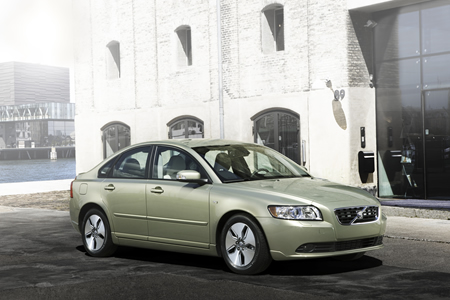
Photo: Volvo S40, Gekko Green
According to Volvo Car Corporation, in Volvo Cars' brand value pyramid, (1) Safety is followed by (2) Care for the Environment and (3) Modern Scandinavian Design, and all these three brand values are tied into Volvo Ocean Race as well.
|GlobalGiants.com|







Edited & Posted by the Editor | 10:44 AM | View the original post
October 18, 2008
New-Vehicle Buyers Turn to the Internet for Information as Buying Habits Shift to Smaller Vehicles: J.D. Power
Consumer-Generated Content Proves Beneficial for Consumers during the New-Vehicle Shopping Process.

New-vehicle buyers are using the Internet more than ever when researching vehicle information, according to the J.D. Power and Associates 2008 New Autoshopper.com Study(SM) released yesterday. J.D. Power and Associates is a business unit of The McGraw-Hill Companies.
The study finds that 75 percent of new-vehicle buyers in 2008 are using the Internet during their shopping process, compared with 70 percent in 2007. This year marks the largest year-over-year increase in online shopping since 2001. The total amount of time shoppers spend online researching automotive information has also increased since 2007 -- up 12 percent to more than six and a half hours. Meanwhile, the number of Web sites being visited by new-vehicle shoppers has remained relatively flat since 2007, which suggests that consumers have become more engaged with the sites they currently visit.

• "The current economic environment, coupled with high fuel prices, has given rise to a shift in the vehicle buying habits of U.S. consumers," said Arianne Walker, director of marketing/media research at J.D. Power and Associates. "Shoppers who were once loyal to larger vehicle models are now finding themselves in the market for a compact or midsize car. For many, this is unknown territory, and these shoppers are turning to the Internet for information and education about the vehicles in their new consideration set. The resulting demand for information provides automotive marketers with valuable opportunities to reach out to shoppers via the Internet."
Automotive manufacturers can further engage shoppers through consumer-generated content on the Web. According to the study, nearly 70 percent of automotive Internet users (AIUs) utilize consumer-generated content while shopping for a new vehicle. In particular, vehicle ratings and reviews are the most popular form of consumer-generated content, with 63 percent of AIUs utilizing this resource. Additionally, 95 percent of AIUs who use consumer ratings and reviews say that the information is "helpful." Dealer ratings and reviews are also popular among new-vehicle shoppers, with 38 percent of AIUs utilizing the resource, and 87 percent of those find the information "helpful."

"The collaborative environment facilitated by Web 2.0 is changing the way shoppers research vehicles, driving many to seek the experiences and opinions of other shoppers and owners," said Walker. "The opinions of other consumers are so impactful that we are already seeing distinct purchasing patterns develop between those shoppers who use consumer ratings and reviews, and those who rely solely on expert ratings and reviews."
The study also finds that different types of automotive Web sites have specific benefits that satisfy the information and shopping needs of consumers. For example, shoppers view independent, third-party sites -- such as Edmunds.com and Kelley Blue Book (kbb.com) -- as being most useful for researching vehicle pricing and for providing ratings, reviews and forums. Conversely, shoppers view manufacturer Web sites as most useful for their information on vehicle model options, features and specifications, while dealer sites are perceived as being most useful for inventory information.
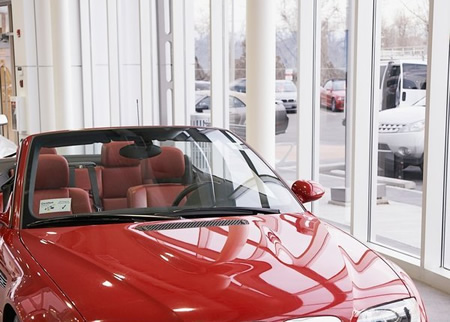
• "The challenge for automotive manufacturers and dealers alike is discovering how best to get involved in online conversations taking place among consumers in order to shift sales to their advantage," said Walker. "Knowing the strengths of various types of sites and where shoppers are going for their information can enable manufacturers and dealers to manage their site content more strategically and focus on efficiently targeting consumers at each stage of the shopping process."
The study also finds that Kelley Blue Book (kbb.com) is the most visited independent Web site, with 44 percent of automotive Internet users visiting the site. Additionally, Edmunds.com is the most useful independent Web site among automotive Internet users. Edmunds.com shoppers are 42 percent more likely than consumers using other independent, third-party sites to say that the reviews, forums and ratings are the most useful information on the site.
This J.D. Power Study is based on the self-reported shopping habits of 27,901 new-vehicle buyers.
|GlobalGiants.com|







Edited & Posted by the Editor | 1:37 PM | View the original post
October 14, 2008
FORD'S SMALL CAR -- ALL-NEW FORD KA
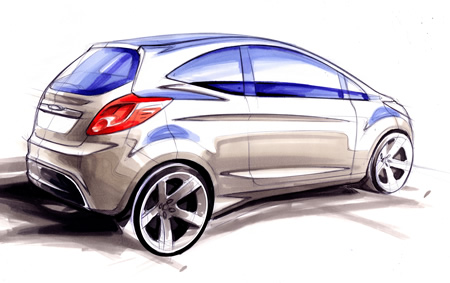
All-new Ford Ka made its global debut at the 2008 Paris Motor Show. Ford informs that it replaces the original Ka but retains all of the qualities which made the Ka brand popular - "compact size, great looks, lively dynamics and fun personality".
The new Ka has striking interior and exterior design, and according to Ford, "It is setting a new standard for affordable small cars. Practical, safe, cheap to run, and friendly to the environment."
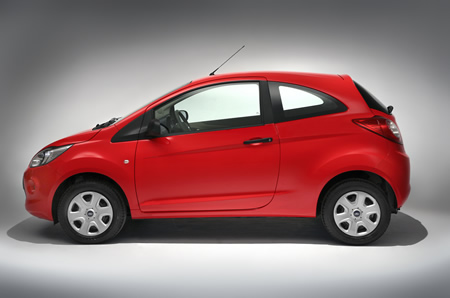
Production of the all-new Ford Ka commences in the autumn of 2008, and the vehicle will go on sale in the UK in late 2008/early 2009.
The first volume production example of the new Ford Ka rolled off the production line at a special ceremony on September 25, in Tychy, Poland, 12 years after the original Ka was launched to great acclaim. Polish Deputy Prime Minister Waldemar Pawlak was guest of honour at the ceremony. With sales due to begin across Europe from early next year, the new Ka was fully revealed to the public at the recent Paris Motor Show.
According to Ford, its designers have given the new Ka a fashionable, modern appearance based around the company's 'kinetic design' form language. A number of visual cues provide a connection to the original Ka, but with its distinctive face and chunky proportions the new model has its own unique character.
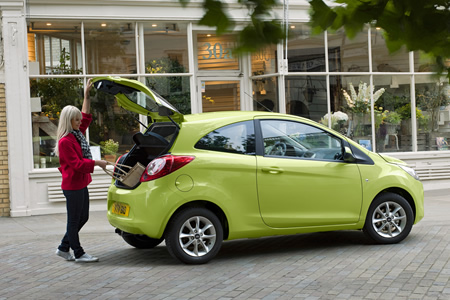
"It was three years ago that we reached agreement with Fiat to produce the new Ka here in Tychy," explained Ian Slater, vice-president communications and public affairs, Ford of Europe. "One of the strengths of this co-operation has been that both parties wanted to produce vehicles which would be very different in looks and character. I'm satisfied that in doing so, we've set up a 'win-win' opportunity for both companies."
Annual production of Ford Ka will be 120,000 units a year.
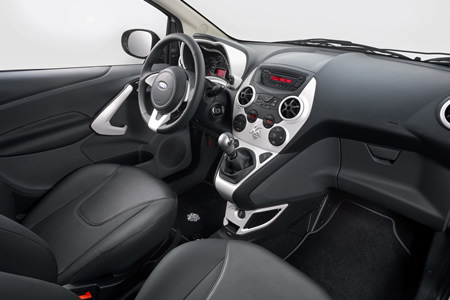
The highly-anticipated new James Bond adventure, 'Quantum of Solace', will feature a cameo appearance from Ford Ka. Ford's cheeky new small car will make its screen debut alongside the film's beautiful but feisty leading lady, Olga Kurylenko. Kurylenko plays Camille, a woman with her own personal mission and who quickly becomes an unlikely ally for Bond.
The new model is expected to continue the considerable success of the original Ford Ka, which is widely considered to be an automotive design icon. Launched at the Paris Motor Show in 1996, the Ka was praised for its exciting "New Edge" styling and class-leading driving dynamics.
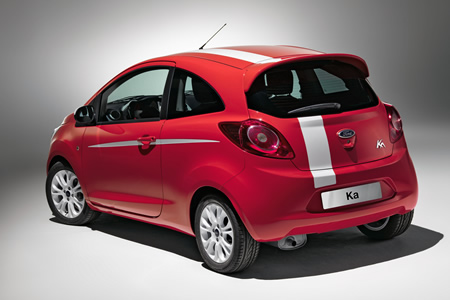
According to Ford, throughout its 12-year life "the Ka has remained tremendously popular among small-car buyers, inspiring fierce loyalty from its owners. In total, Ka production has exceeded 1.4 million vehicles".
"We are very excited about the launch of the new Ka", said Roelant de Waard, Chairman and Managing Director, Ford of Britain. "The original has been a huge hit in the UK with a sales record of over 480,000 - 80 per cent of which have been to retail customers, and many of those first-time buyers. I'm confident that the latest design will prove just as big a hit", he added.
|GlobalGiants.com|







Edited & Posted by the Editor | 3:20 AM | View the original post
October 10, 2008
New Light-Vehicle Sales in U.S., Chinese, Indian and European Markets Anticipated to Slow Dramatically -- J.D. Power Report

According to J.D. Power and Associates Report released today, as the U.S. new-vehicle retail market continues to deteriorate, new-vehicle retail sales are projected to end 2008 at 10.8 million units, which is 2 million units below 2007 sales.
Approximately two-thirds of the decline in retail sales -- which are reflective of actual consumer behavior in the new-vehicle marketplace -- can be attributed to consumers delaying vehicle purchases. On average, consumers are keeping their vehicles 4 months longer in 2008 compared with 2007 -- up from 67 months to 71 months. The remaining one-third of the volume decline comes from reduced leasing activity. Additionally, fleet sales are expected to decline to 2.8 million units in 2008, which is well below the 3.3 million unit level achieved in 2007.
"Buyers are both voluntarily and involuntarily exiting the U.S. new-vehicle market," said Jeff Schuster, executive director of automotive forecasting for J.D. Power and Associates. "The additional decline in expected vehicle sales is a function of growing concerns around availability of credit and leasing, declines in vehicle equity and general economic stress."
The current turmoil and financial crisis adds risk to the 2008 forecast of up to 200,000 units, as it is unclear how consumers will respond in the fourth quarter.
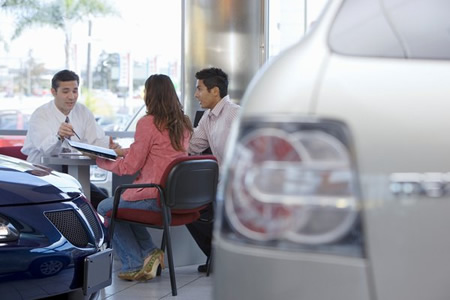
• Total U.S. Light-Vehicle Market:
(Light vehicles are defined as passenger cars, SUVs, MPVs and light commercial vehicles with gross vehicle weight of less than six tons.)
J.D. Power and Associates forecasts total new light-vehicle sales -- which includes both retail and fleet sales -- to drop to 13.6 million units in 2008, registering a 16 percent decline from 16.1 million units in 2007.
Market uncertainty has also led to a downward revision of the J.D. Power and Associates 2009 U.S. light-vehicle forecast. Total new light-vehicle sales are expected to drop to 13.2 million units in 2009, with the retail sales market declining to 10.6 million units.
"Falling trade-in equity, fewer leasing options, credit market restructuring and the increased migration to used vehicles are all putting added pressure on the U.S. new-vehicle sales market in 2009," said Schuster. "Any truly pronounced recovery appears to be more than 18 months away."
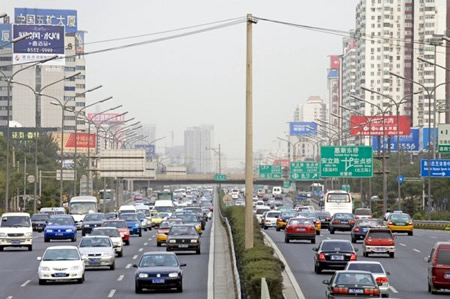
• China Light-Vehicle Market:
Slowing within China's automotive market is projected to intensify during the fourth quarter of 2008, and will likely lead to a downward revision for 2009. Despite the slowing, light-vehicle sales -- including passenger vehicle and light commercial vehicle segments -- in China are expected to reach 8.9 million units in 2008, which marks an increase of 9.7 percent from 2007. However, the projected growth rate for the China automotive market in 2008 is less than one-half of the 24.1 percent growth achieved in 2007.

• Indian Light-Vehicle Market:
The light-vehicle sales forecast has also been reduced for the India market, down 6 percent from the original forecast of 1.9 million units to 1.8 million units for 2008. The 5.1 percent growth rate forecasted for 2008 is considerably less than the increases demonstrated in 2007 (16%) and 2006 (21%).
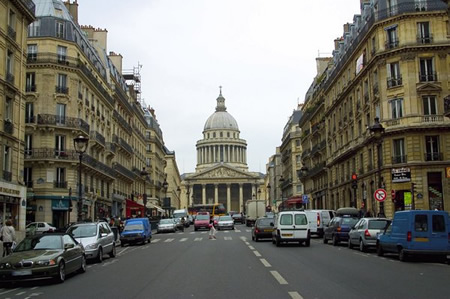
• European Light-Vehicle Market:
Light-vehicle sales in Europe are expected to fall to 21.3 million units in 2008, marking a 3.1 percent decline from sales in 2007. Within Western Europe, sales are forecasted to decline to 15.6 million -- a decrease of 7.5 percent from 2007. While sales in Eastern Europe are expected to increase to 5.8 million in 2008 -- up 11.3 percent from 2007, growth within the region is slowing considerably.
"While the global automotive industry is clearly experiencing a slowdown in 2008, the global market in 2009 may experience an outright collapse," said Schuster. "While mature markets are being impacted more severely than emerging markets, no country or region is completely immune to the turmoil."
Source: J.D. Power and Associates
|GlobalGiants.com|







Edited & Posted by the Editor | 2:59 PM | View the original post
October 9, 2008
Public Transit Usage is Rising in America

A U.S. mational survey shows that rather than wait for an electric car or better biofuels, millions of Americans are saving money and time by switching to public transportation.
According to this new nationwide survey commissioned by the HNTB Companies, more than 24 million Americans -- 11 percent of the adult population -- are using buses, light rail, commuter rail and other forms of public transportation more than they did last year. An even greater percentage of survey respondents, 16 percent, said they expect their ridership to increase in the coming year.
(The HNTB Companies is an organization of infrastructure firms. The three operating companies of HNTB Companies include HNTB Corporation, a transportation, engineering, planning and construction management firm; HNTB Architecture Inc., whose design professionals provide services to the buildings market; and HNTB Federal Services Corporation, which provides federal-sector clients diverse infrastructure services.)
"As today's Americans face increasing demands on their time and money, riding public transit is shifting from something they should do, like eating their vegetables, to something they want to do," said Peter Gertler, vice president and national director of public transit services for HNTB Corporation.
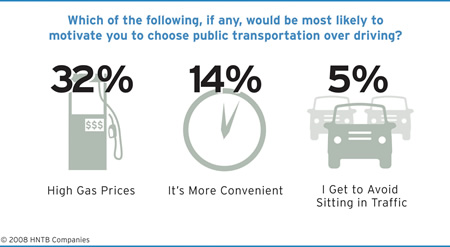
Nearly one in three Americans (32 percent) said their biggest motivator to choose public transportation over driving would be high gas prices. While conventional wisdom holds Americans would find it frustrating to give up the convenience of a car, the survey found the second most popular reason someone would choose public transportation over driving is more convenience (14 percent). Avoiding traffic (5 percent) was a distant third, followed by concern for the environment (4 percent).
"For more than 50 years, the automobile has ruled the transportation landscape," Gertler said. "Our interstate highways are aging and under tremendous strain, and we're seeing the costs of an unbalanced transportation system. Now more than ever we need to invest in multiple modes of transportation that address modern demands and preserve our quality of life."
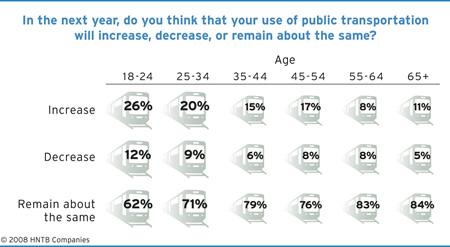
Gertler cited several benefits in a balanced approach to transportation that includes public transit:
• Saves time and conserves fuel -- 541 million hours and 340 million gallons, according to the Texas Transportation Institute's 2007 Urban Mobility Report.
• Saves money -- Americans living in areas served by public transportation save $18 billion annually in congestion costs.
• Promotes cleaner air -- Public transit usage reduces U.S. carbon emissions by 37 million metric tons a year, equivalent to the electricity used by 4.9 million households.
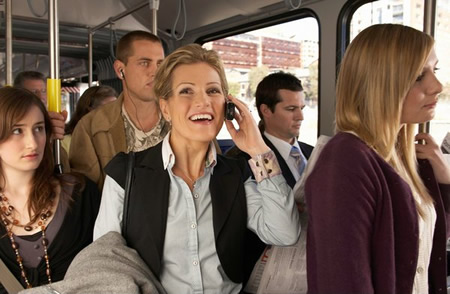
Measuring transit trends across the country, the survey also found:
• More than twice as many men as women (15 percent versus 7 percent) say they're using public transit more often than a year ago.
• Young Americans are making the transition in greater numbers. Nearly one in five adults ages 18-34 have increased their public transit usage in the last year (19 percent); that's more than twice the number of Americans ages 35 and up who can make the same claim (8 percent).
• The average American who has public transportation available to them uses it once a week, in effect giving their car the day off.
• Nearly four in ten Northeasterners (38 percent) use public transportation, more than any other region in the country.
• Southerners, however, have fewer options. One in ten says they do not have public transit where they live or work.
Source: HNTB Companies
|GlobalGiants.com|







Edited & Posted by the Editor | 10:06 AM | View the original post
October 7, 2008
Reader's Digest Conducts Global Presidential Poll
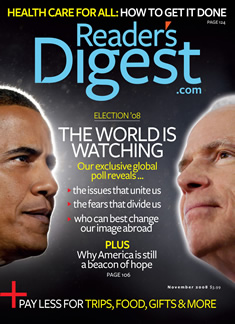
According to the results of a first-ever global presidential poll conducted by Reader's Digest magazine and published in the November issue (on newsstands October 21), Barack Obama is the world's preferred choice for president of the United States by far.
(Reader's Digest magazine is published in 21 languages and reaches 70 million readers worldwide. It is part of The Reader's Digest Association, Inc., a global multi-brand media and marketing company headquartered in Pleasantville, New York, USA.)
The poll, part of the cover story "How the World Sees Us" by Reader's Digest Washington Bureau Chief Carl Cannon, asked 17,000 people in 17 countries, including the United States, whom they would like to see in the White House, and to weigh in on the global issues they most care about. They were also asked to characterize how America is perceived abroad.
"For the first time, Reader's Digest used its unique international footprint to provide a tapestry of global perspectives on several of the most important issues of our time, leading with the election of the next American president," said Peggy Northrop, U.S. Editor-in-Chief, Reader's Digest.
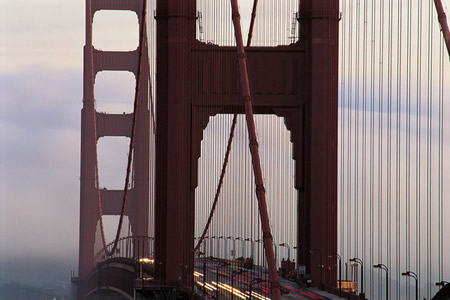
• Regarding the question of which candidate they would vote for if they could, respondents voted overwhelmingly for Obama in every country polled, with the exception of the United States, where Republican John McCain was preferred over Democrat Obama by a narrow margin.
• "It's Obama by a landslide -- except in the country in which he's actually running for president," said John Fredricks, Director of Polling for Reader's Digest. "What is most striking is the margin of his support."
In the Netherlands, Obama-mania surpassed 90 percent. In Germany, it was at 85 percent--numbers not usually seen in political polling. Similar results held true on all six continents that the magazine polled.
One of the questions was "When you think of the U.S. government, do you consider yourself pro-American, neutral or anti-American?" The poll also asked respondents to rank eight issues in importance: terrorism, the war in Iraq, the global economy, global poverty, human rights, the environment, international trade, and nuclear proliferation.
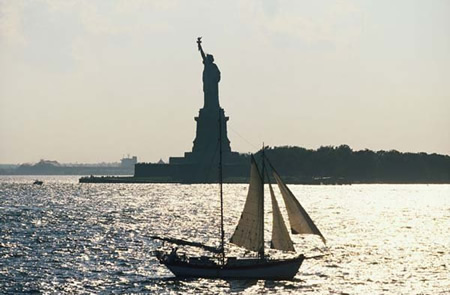
Key Snapshots:
• Americans ranked the global economy as most important; terrorism, second; and the war in Iraq, third. Only the Russians were more concerned with terrorism than Americans.
• In seven nations (Australia, Brazil, Canada, Finland, Germany, Great Britain and Taiwan), the environment came out on top as a major concern.
• Respondents in Canada, Germany, Netherlands, Finland, Australia, and South Africa reported paying the most attention to the U.S. election. Respondents in Brazil, Poland, Russia, India, and Taiwan reported paying the least attention.
• While preference for the candidates is nearly equal in the U.S., support for Obama is significantly stronger in all other nations.
• In the U.S., McCain is seen as more qualified to address issues related to war and security, while Obama is the stronger candidate for humanitarian issues, such as poverty, the environment and human rights.
• Globally, the most important issues are the economy, poverty, and the environment.
• The election of Obama would be more likely to improve the image of the U.S.
• Most countries polled have a neutral opinion of the U.S. government. India is the most pro-American government (31%) while Spain, Netherlands, Indonesia and Canada have the highest percent (21%, 21%, 20%, 19%) of respondents who are anti-American government.
• The majority in India (73%), South Africa (65%), the Netherlands (55%) and France (52%) would be interested in moving to the U.S. while about 70% of respondents in Poland, Russia, Indonesia, and Australia expressed a lack of interest in moving to the U.S.
• South Africa is the only country where the election of McCain would have a slightly more positive impact on the image of the U.S.
Source: Reader's Digest
"Well, also, was it written by Theologians: a King rules by divine right. He carries in him an authority from God, or man will never give it him. Can I choose my own King? I can choose my own King Popinjay, and play what farce or tragedy I may with him: but he who is to be my Ruler, whose will is to be higher than my will, was chosen for me in Heaven."
- Thomas Carlyle, Sartor Resartus
|GlobalGiants.com|







Edited & Posted by the Editor | 7:32 AM | View the original post
October 6, 2008
Louis Vuitton Spring Summer 2009 Fashion Show at Closing of Paris Fashion Week

Photo: Paris, October 5, 2008 - Marc Jacobs and the models. (© Louis Vuitton / Bertrand Rindoff Petrov et Mazen Saggar)

Photo: Paris, October 5, 2008 - Zoe Cassavetes, Sofia Coppola, Marc Jacobs, Lenny Kravitz. (© Louis Vuitton / Bertrand Rindoff Petrov et Mazen Saggar)
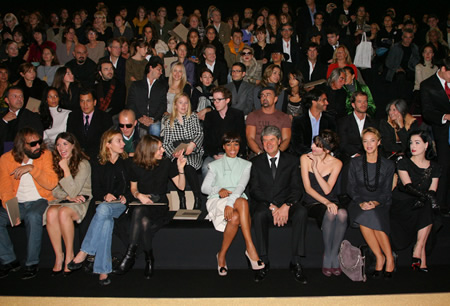
Photo: Paris, October 5, 2008 - Sebastien Tellier, Amandine de la Richardiere, Zoe Cassavetes, Sofia Coppola, Kerry Washington, Yves Carcelle, Cecile Cassel, Helene de Fougerolles, Dita Von Teese. (© Louis Vuitton / Bertrand Rindoff Petrov et Mazen Saggar)
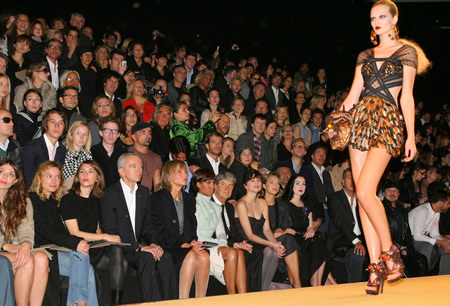
Photo: Paris, October 5, 2008 - Amandine de la Richardiere, Zoe Cassavetes, Sofia Coppola, Bernard Arnault, Helene Arnault, Kerry Washington, Yves Carcelle, Cecile Cassel, Helene de Fougerolles, Dita Von Teese, Mario Testino, Peter Marino, model from the Spring Summer 2009 show. (© Louis Vuitton / Bertrand Rindoff Petrov et Mazen Saggar)
The house of Louis Vuitton, with Marc Jacobs as Artistic Director, closed fashion week in Paris October 5, 2008 with its Spring Summer 2009 collection in the historic "Cour Carree" of the Louvre.
Yves Carcelle, President of Louis Vuitton received the international press and many celebrities including Sofia Coppola, Lenny Kravitz, Kerry Washington, Zoe Cassavetes, Cecile Cassel, Sebastien Tellier, Eva Amurri, Helene de Fougerolles, and Dita von Teese.
Source: Louis Vuitton
|GlobalGiants.com|







Edited & Posted by the Editor | 4:28 AM | View the original post
October 4, 2008
Realtors, Accountants Applaud House Passage of Financial Stability Bill

"The National Association of Realtors(R) is truly relieved that members of the U.S. House of Representatives, like their counterparts in the Senate, were able to come together in a bipartisan effort to pass the Emergency Economic Stability Act of 2008. As we have been saying, this legislation is critical to stopping the economic turmoil that millions of Americans are facing. Today's action will go a long way toward ending the current economic crisis crippling the housing and financial markets.
This legislation would quickly restore liquidity to the mortgage market, which would stabilize the housing market and protect homeowners. Mortgages as well as personal and small business loans would become more available and less costly. Protecting Main Street not only benefits individuals, families and communities, but also supports the larger U.S. economy.
We expect that the president will act quickly to sign and enact this bill. We thank President Bush for his steadfast leadership on this issue, commend all parties that worked on this legislation, and look forward to working together toward a strengthened economy for the benefit of all Americans."
- Richard F. Gaylord, President, National Association of Realtors. [National Association of Realtors, 430 North Michigan Avenue, Chicago, IL 60611, USA.]

"The House of Representatives' historic vote demonstrated leadership in difficult times. Americans and businesses, small and large, are already suffering financial challenges as a result of this crisis. This legislation is the first step in restoring liquidity in our economy. CPAs will roll-up our sleeves to do our part to help individuals and businesses move forward. The profession has already been actively reaching out through extensive financial literacy efforts to help Americans cope with the personal financial challenges they face.
The AICPA is pleased Congress avoided calls by some for an immediate suspension of fair value accounting rules. The bill includes a call for an objective study of mark-to-market accounting. We look forward to participating with the Securities and Exchange Commission and the Financial Accounting Standards Board in a thoughtful review.
Accounting standards are the keystone of our financial reporting system and are designed to provide investors and management with timely signals about the financial condition of our publicly-traded companies. Our longstanding position is that accounting standards ultimately should be set by the private sector."
- Barry Melancon, President, American Institute of Certified Public Accountants (AICPA). [HQ: AICPA, 1211 Avenue of the Americas, New York, NY 10036, USA. The American Institute of Certified Public Accountants is the national, professional association of CPAs, with more than 350,000 CPA members in business and industry, public practice, government, education, student affiliates, and international associates. It sets ethical standards for the profession and U.S. auditing standards for audits of private companies, non-profit organizations, federal, state and local governments. It develops and grades the Uniform CPA Examination.]
|GlobalGiants.com|







Edited & Posted by the Editor | 12:50 PM | View the original post
October 3, 2008
Paris Motor Show 2008: AutoWeek Editors Announce Editors' Choice Award Winners
The Editors' Choice Awards recognize Best in Show, Best Concept, Most Significant and Most Fun.

The AutoWeek editorial staff today announced its Editors' Choice Award winners for the 2008 Paris Motor Show.
"The Paris Motor Show has renewed our faith in the auto industry and its future," said AutoWeek Editor and Associate Publisher Dutch Mandel. "Despite the dismal global economy and the state of the industry, we saw a surprising number of exciting vehicles, both foreign and domestic."
Following are the 2008 AutoWeek Editors' Choice Award winners for the Best of Paris:
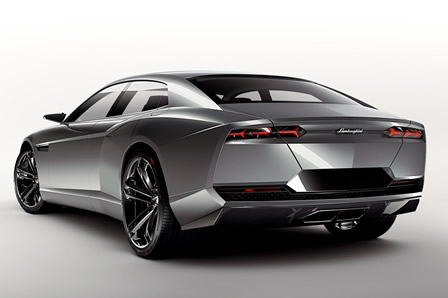
• BEST IN SHOW: Lamborghini Estoque -- "While the design is somewhat contrived, the Estoque really has presence when you see it in person. This is the car people will clearly remember," said Mandel.
• Contenders for Best of Show -- Ferrari California, Saab 9-X Air and BMW 7-series
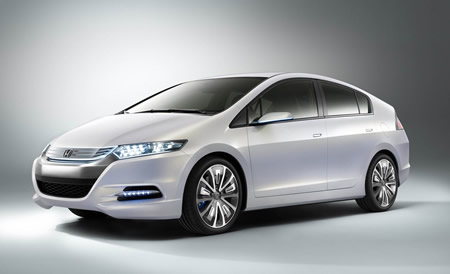
• MOST SIGNIFICANT: Honda Insight -- "This hybrid car will be cheaper than the Prius, have high fuel economy and seating for five. Honda has officially returned to the game they used to own."
• Contenders for Most Significant -- Audi A1 Sportback, Pininfarina Bollore, Mercedes Fascination and Volkswagen Golf
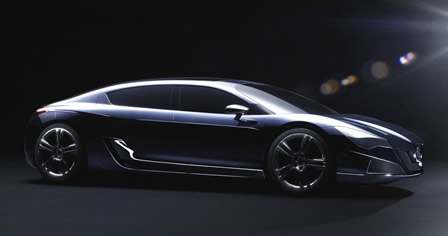
• BEST CONCEPT: Peugeot RC HyMotion4 -- "If the French automakers were to come to the U.S., this is the car Americans would want. Here is an electric sports car we can love."
• Contenders for Best Concept -- Honda Insight, Mercedes Fascination, Audi A1 Sportback and Saab 9-X Air
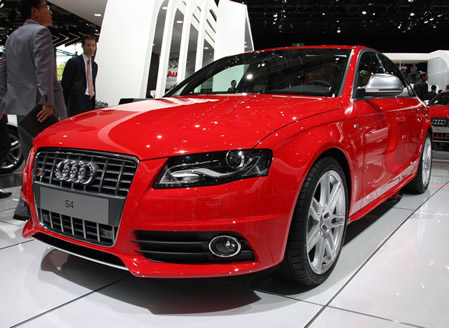
• MOST FUN: Audi S4 -- "The S4 is a rocket ship that is fun and fuel efficient. It satisfies on all fronts."
• Contenders for Most Fun -- Fiat 500 Abarth Essesse, Ferrari California, Volkswagen Golf GTI and Lexus IS250C
AutoWeek is America's only weekly automotive enthusiast magazine. For more than a decade, the editors of this weekly have been selecting winners in four categories (1) Best in Show, (2) Best Concept, (3) Most Significant and (4) Most Fun at auto shows in Detroit, Geneva, Paris, Frankfurt and Tokyo.

"At the world's top auto shows, AutoWeek has been selecting winners in four categories - Best in Show, Best Concept, Most Significant, and Most Fun. These categories cover all types of cars displayed there. Yet, taking note of the new circumstances in which the automobile industry finds itself today, AutoWeek editors could consider adding another category, such as - Most Handy or Best Handy."
© GlobalGiants.Com
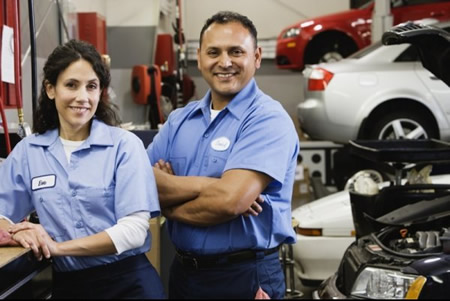
"With U.S. automakers reporting their worst monthly sales results of the year and no signs of relief expected in 2009, we now believe that as many as 100,000 industry-related jobs may be at risk.
With a more than 2 million unit sales decline likely this year compared with 2007, followed by a prolonged slump expected next year, the downturn is placing unforeseen levels of stress on the industry, we expect many players do not have the cash, credit or means to see the cycle through.
The last three quarters have seen a sharp curtailment in leases, high commodity and energy costs, a tightening of credit and rising unemployment. Consumers are fatigued, and we see more of the same in 2009 based on our read of the underlying industry fundamentals.
Only a resurgence in consumer confidence, stable financial markets, a resumption in the free flow of capital and a revitalized construction/real estate market can mitigate the downside risk."
- Grant Thornton LLP Corporate Advisory and Restructuring Services
|GlobalGiants.com|







Edited & Posted by the Editor | 10:48 PM | View the original post
